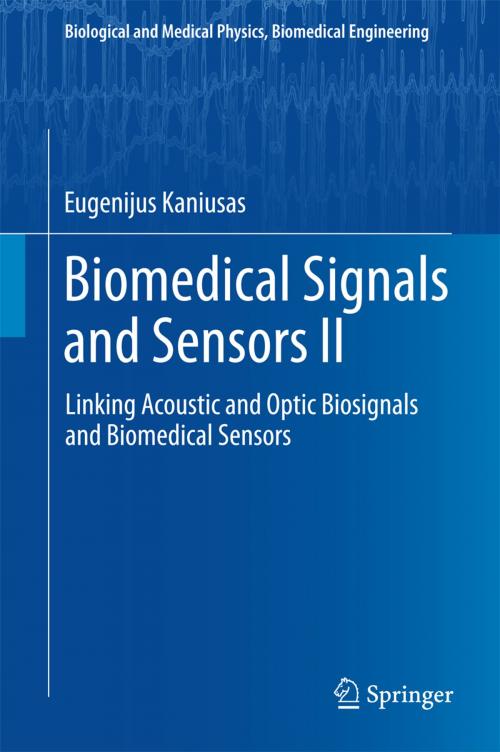Biomedical Signals and Sensors II
Linking Acoustic and Optic Biosignals and Biomedical Sensors
Nonfiction, Science & Nature, Science, Biological Sciences, Biophysics, Technology, Engineering, Health & Well Being, Medical| Author: | Eugenijus Kaniusas | ISBN: | 9783662451069 |
| Publisher: | Springer Berlin Heidelberg | Publication: | March 3, 2015 |
| Imprint: | Springer | Language: | English |
| Author: | Eugenijus Kaniusas |
| ISBN: | 9783662451069 |
| Publisher: | Springer Berlin Heidelberg |
| Publication: | March 3, 2015 |
| Imprint: | Springer |
| Language: | English |
The book set develops a bridge between physiologic mechanisms and diagnostic human engineering. While the first volume is focused on the interface between physiologic mechanisms and the resultant biosignals, this second volume is devoted to the interface between biosignals and biomedical sensors. That is, in the first volume, the physiologic mechanisms determining biosignals are described from the basic cellular level up to their advanced mutual coordination level. This second volume, considers the genesis of acoustic and optic biosignals and the associated sensing technology from a strategic point of view. As a novelty, this book discusses heterogeneous biosignals within a common frame. This frame comprises both the biosignal formation pathfrom the biosignal source at the physiological level to biosignal propagation in the body, and the biosignal sensing path from the biosignal transmission in the sensor applied on the body up to its conversion to a, usually electric, signal.
Some biosignals arise in the course of the body’s vital functions while others map these functions that convey physiological data to an observer. It is highly instructive how sound and light beams interact with biological tissues, yielding acoustic and optic biosignals, respectively. Discussed phenomena teach a lot about the physics of sound and physics of light (as engineering sciences), and, on the other hand, biology and physiology (as live sciences). The highly interdisciplinary nature of biosignals and biomedical sensors is obviously a challenge. However, it is a rewarding challenge after it has been coped with in a strategic way, as offered here. The book is intended to have the presence to answer intriguing “Aha!” questions.
The book set develops a bridge between physiologic mechanisms and diagnostic human engineering. While the first volume is focused on the interface between physiologic mechanisms and the resultant biosignals, this second volume is devoted to the interface between biosignals and biomedical sensors. That is, in the first volume, the physiologic mechanisms determining biosignals are described from the basic cellular level up to their advanced mutual coordination level. This second volume, considers the genesis of acoustic and optic biosignals and the associated sensing technology from a strategic point of view. As a novelty, this book discusses heterogeneous biosignals within a common frame. This frame comprises both the biosignal formation pathfrom the biosignal source at the physiological level to biosignal propagation in the body, and the biosignal sensing path from the biosignal transmission in the sensor applied on the body up to its conversion to a, usually electric, signal.
Some biosignals arise in the course of the body’s vital functions while others map these functions that convey physiological data to an observer. It is highly instructive how sound and light beams interact with biological tissues, yielding acoustic and optic biosignals, respectively. Discussed phenomena teach a lot about the physics of sound and physics of light (as engineering sciences), and, on the other hand, biology and physiology (as live sciences). The highly interdisciplinary nature of biosignals and biomedical sensors is obviously a challenge. However, it is a rewarding challenge after it has been coped with in a strategic way, as offered here. The book is intended to have the presence to answer intriguing “Aha!” questions.















![Cover of the book Supramolecular Assemblies of Cucurbit[n]urils with Metal Ions by Eugenijus Kaniusas](https://www.kuoky.com/images/2015/march/300x300/9783662466292-ALhG_300x.jpg)